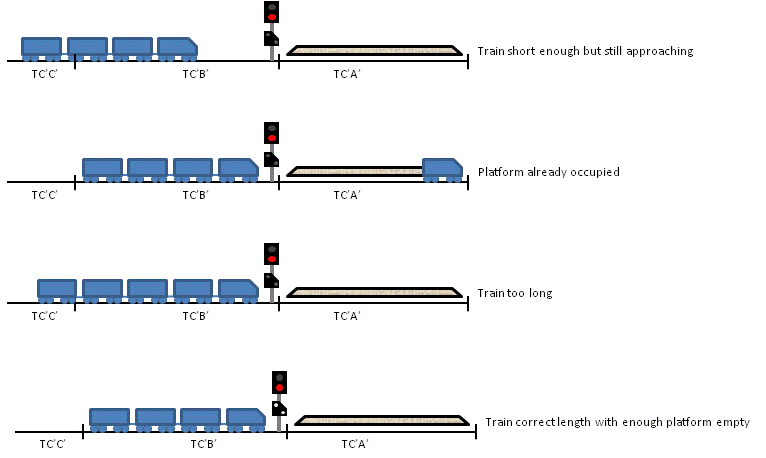Lime Street Control
Where a train is to be called-on into an occupied platform, it is obviously desirable that the platform be long enough to accommodate the additional train - especially in cases where the signaller is unable to see either the train, the platform, or both. Therefore, Lime Street Control uses a set of track circuits to approximately determine both platform space available and the length of the train approaching.
Because of the cost of track circuits, this method only works with certain combinations of trains. For example, at a particular London terminus, each platform has a 4-carriage length track circuit at the signal end of the platform (let's call it TC'A'), and a 4-carriage length measuring track on the station approach signal (let's call it TC'B'), and an additional track approaching the measuring track (let's call it TC'C'). The conditions for the calling-on aspect to be shown are therefore (TC'A' clear) and (TC'B' occupied) and (TC'C' clear), along with the usual conditions.
In the example above, with just a light engine at the buffer stops and a five car train approaching, the signal will never clear to a calling-on aspect as the equipment is only set up to measure the final four carriages possible. Other stations may have a 4-car and an 8-car (for example) set of measuring tracks and platform tracks but these are more rare due to the expense and complexity.
At Victoria Central, the track circuit information for the platforms is as above, but it is possible to get the calling on signal for an 8-car arriving train. If you are not careful, then it is possible to put an 8-car arriving train on top of an 8-car stabled train in a 12-car platform!

Last edited by GeoffM on 15/09/2016 at 03:01